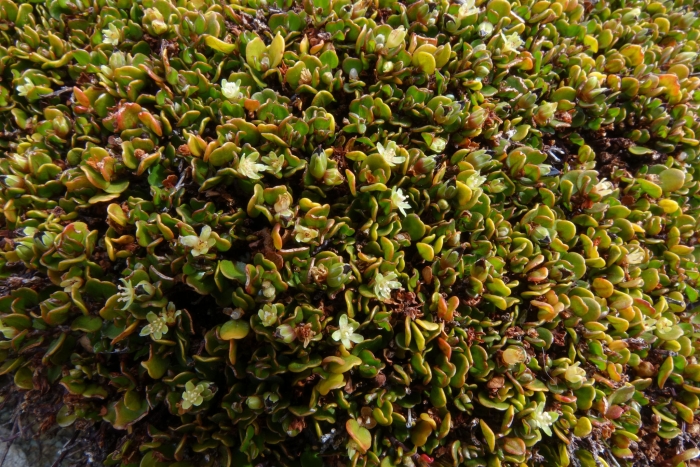Creeping Wire Vine
(Muehlenbeckia axillaris)
Creeping Wire Vine (Muehlenbeckia axillaris)
/
/

John Barkla
CC BY 4.0




















































Estimated Native Range
Summary
Creeping wire vine is valued for its hardiness, drought tolerance, and rapid growth, making it an excellent choice for ground cover, especially in rocky or poor soil conditions. It is also used in hanging baskets and as a spillover plant in containers due to its cascading habit. In cultivation, it thrives in full sun to part shade and adapts to a variety of soil types, provided they have good drainage. While it grows fastest in warm seasons, it can withstand freezing temperatures. Gardeners should be aware that it can become invasive in some conditions, spreading vigorously and potentially outcompeting other plants.CC BY-SA 4.0
Plant Description
- Plant Type: Shrub
- Height: 0.3-0.5 feet
- Width: 1-1.5 feet
- Growth Rate: Moderate
- Flower Color: N/A
- Flowering Season: Spring, Summer
- Leaf Retention: Evergreen
Growth Requirements
- Sun: Full Sun, Part Shade
- Water: Medium
- Drainage: Slow, Medium, Fast
Common Uses
Bank Stabilization, Deer Resistant, Edible*Disclaimer: Easyscape's listed plant edibility is for informational use. Always verify the safety and proper identification of any plant before consumption., Groundcover, Low Maintenance, Rock Garden, Salt Tolerant, Street Planting
Natural Habitat
Native to scrub and rocky areas, coastal regions in New Zealand, Tasmania, New South Wales, and Victoria
Other Names
Common Names: Creeping Wire Vine, Matted Lignum, Slideranka
Scientific Names: , Muehlenbeckia axillaris, Polygonum depressum, Polygonum axillare, Muehlenbeckia parvifolia, Calacinum axillare, Muehlenbeckia hypogaea, Muehlenbeckia nana, Muehlenbeckia parvifolia var. caespitosa, Muehlenbeckia parvifolia var. expansa
GBIF Accepted Name: Muehlenbeckia axillaris (Hook.fil.) Walp.